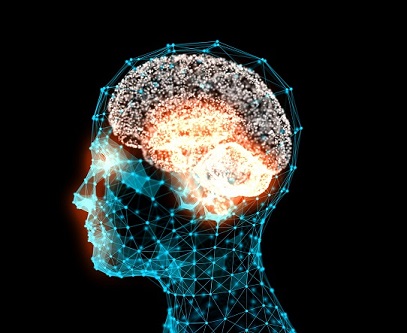
Neuroscience and Emotional Regulation instructor Hannah Smith started down the path to becoming a mental health practitioner with an exploration of her own personal challenges. “I started out as a Special Education teacher because I knew I wanted to help people and I was good with disabled classmates,” says Smith. “I had grown up with disabilities of my own and could understand and empathize with their experience. However, after some time teaching, I knew that was not really where I belonged.” After supporting of one her students through a personal tragedy, she felt moved and inspired to consider mental health counseling as a career. “I returned to school and completed my MA in Counseling Psychology, with a focus on trauma and Spiritual Abuse.” 
Years later while working as a behavior coach in India, Smith not only honed her counseling skills, but also discovered an interest in consulting and training. “When I returned to the US, I wanted to work in the corporate sector again,” she says. “I decided at that point that I wanted to start my own consulting company. In recent months, I have increased my experience as a trainer and teacher by working all over the country. I hope to one day offer training, counseling, and consulting opportunities. A few years down the line, I plan to add a retreat center that is a whole-person, neuroscience-informed in its approach. All of my work includes a whole-person focus.”
For Smith, the study of emotions and the brain was a revelatory one that grew to inform how she would pursue her professional practice. “Some early mind-blowers came from understanding that each emotion carries with it a rather specific set of messages and that a cascade of internal and external biological and behavioral events occur that we can have a great deal of influence on,” she says. “In other words, we CAN change how we feel about things and therefore change our attitudes and lives in general. It takes work, but it can be done!”
According to Smith, our emotional responses to stimuli do not stem from any one, but numerous sources. “Our experiences certainly do affect how we react to our emotions, as does our biology. However, I do not believe there is a consensus to whether it is nature or nurture or both that most contributes to how we respond. Personally, I think it has to do with the level of mindful choices we make in response to our situations—but I think there are many factors that contribute. No matter what the history, though...the future can be different. It is largely a choice.”
Neuroscience and Emotional Regulation is a class Smith believes will be of benefit to professionals and the layperson. “In the Continuing Education setting, I will be  very flexible with the content,” she says. “One need not be a healthcare provider to gain something from this class. I believe I will be able to convey the information in a way that will allow both the experienced therapist and the novice to understand and use the concepts in their daily lives.”
very flexible with the content,” she says. “One need not be a healthcare provider to gain something from this class. I believe I will be able to convey the information in a way that will allow both the experienced therapist and the novice to understand and use the concepts in their daily lives.”
Smith says students can look forward to a fun and interactive class that will be as challenging as it is enlightening. “Attendees will discover themselves and others in a fresh, new way and that will likely result in increased understanding and sense of empowerment. It won't be a ‘sit and listen’ class...there will be activities and experiences that really bring the information alive! I look forward to students leaving with a greater sense of awe at the absolutely magnificently wired creatures they are...and if that's too lofty, then a renewed sense of empowerment in their own lives and hope for those they work or interact with.”
Learn more about Neuroscience and Emotional Regulation.
Photo credit #1: Алексей М_cc_2.0
Photo credit #3: Susan Moore Cool_cc_2.0